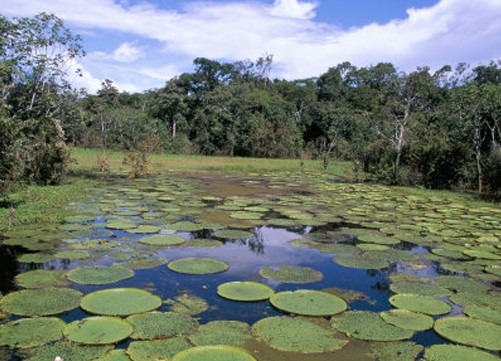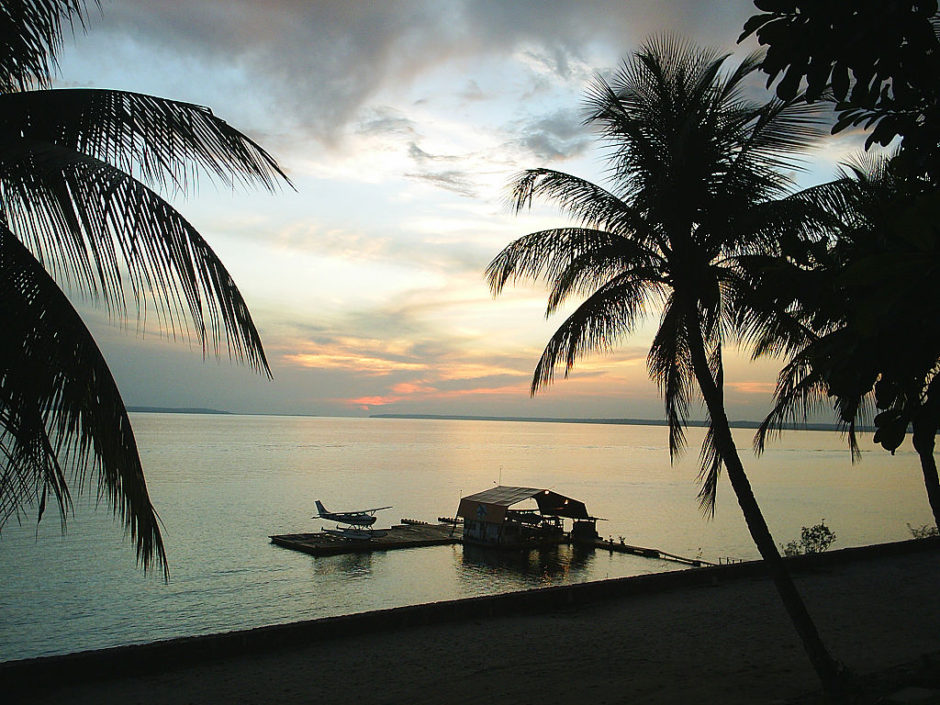Improbably enough, one of the world’s most impressive 19th century opera houses, the Teatro Amazonas, is in Manaus, right in the middle of the great Amazon rainforest.
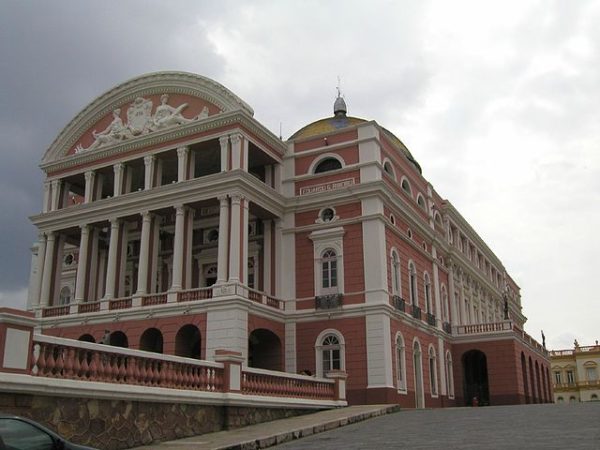
The elegant pink and white neo-classical building, sporting an iridescent dome sprinkled with a dusting of colors, lies in old quarter of Manaus, the commercial capital of the state of Amazonas. Hemmed in all sides by the jungle, Manaus, population two million-plus, is situated at the confluence of the Rio Negro River and the mighty Amazon River.
Far and away its chief tourist attraction, the Teatro Amazonas was finished in 1896 after 15 years of construction. It has since been renovated several times.
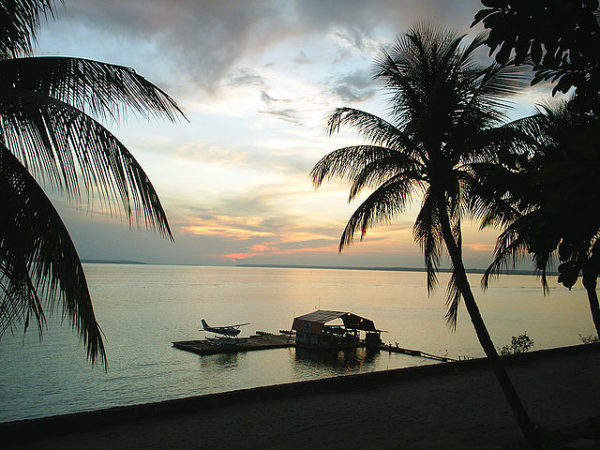
Designed by Italian architect Domenico Angelis, it was built during the brief rubber boom, when Brazil was virtually the only country producing that valuable commodity. The monopoly enriched a handful of rubber barons, who spared no expense to pursue an extravagant lifestyle. It was their idea to bring a world-class opera house to the Amazon wilderness, which remains relatively pristine even today.
Still in use after 120 years, the opera house — which can accommodate an audience of 700 on the main floor and in three galleries — was constructed of the best materials by craftsmen from Europe.
The floors were hewn from Brazilian hardwood, Latvian pine and Italian marble. The chandeliers and mirrors were imported from France. The cast iron columns and railings were manufactured in Scotland.
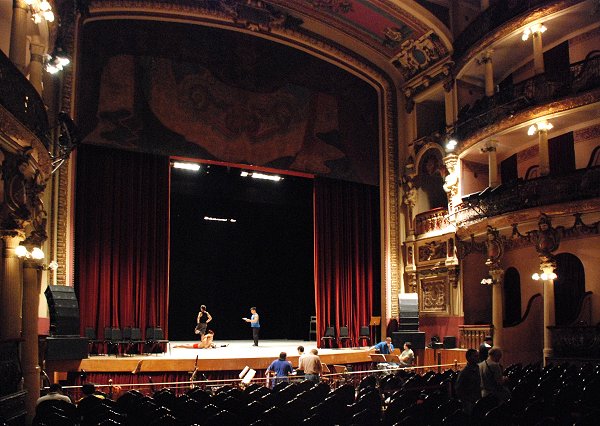
The elaborate frescoes on the ceilings and the walls, painted by Italian artists, depict Greek goddesses, Rubenesque maidens and scenes from the rainforest.
The seats were upholstered with Chinese silk and the banisters were sheathed with the softest velvet.
Ventilation shafts were installed under the seats, in deference to the tropical climate, which rarely dips below 28 degrees centigrade.
Last restored 26 years ago, the opera house is next to a deep-blue 19th century colonial-style building and St. Sebastian Square, whose wavy black-and-white tiles are quintessentially Portuguese.
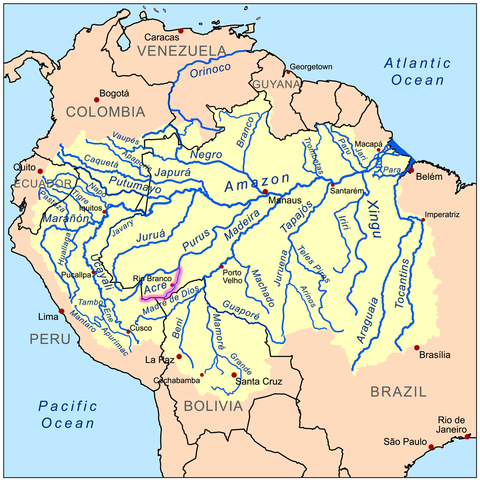
Manaus, whose name comes from an indigenous Indian phrase meaning the mother of gods, was founded as a fort by Portuguese explorers in 1669. But it was not until the short-lived rubber boom, which began in 1890 and ended around 1914, that Manaus came into its own as an important mercantile city.
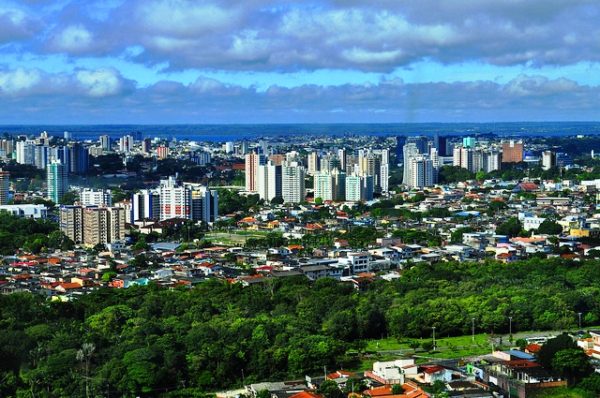
The customs house, which opened in 1906, and the floating docks, which were inaugurated in 1902, are associated with this bygone era, when Manaus was known as the “Paris of the tropics.”
The floating docks, imported from Britain in prefabricated blocks, are a marvel of engineering, rising and falling with the level of the Rio Negro. During the rainy season, which runs from January until June, the river can be 13 meters higher than normal.
An enduring symbol of Manaus’ openness to the world and its reliance on the import-export trade, the docks serve ocean-going ships the whole year round. Manaus is about 1,500 kilometers from the Atlantic Ocean.
The customs house, fitted with ceramic tiles to withstand the humid climate, was constructed in Britain as well.
Manaus’ municipal market, a cast iron affair that bears a resemblance to Les Halles in Paris, carries an huge selection of fresh fish, exotic local fruits, mounds of vegetables, slabs of glistening meat and handicrafts. It’s best to visit in the early morning, when the market buzzes with activity and excitement.
There are about 65 towns in Amazonas and the best way to reach them is by boat, or water taxi. These two-storey boats, anchored in front of the market, are jammed with passengers, much like second-class trains in India. Passengers who intend to spend at least one night on a vessel bring their own hammocks.
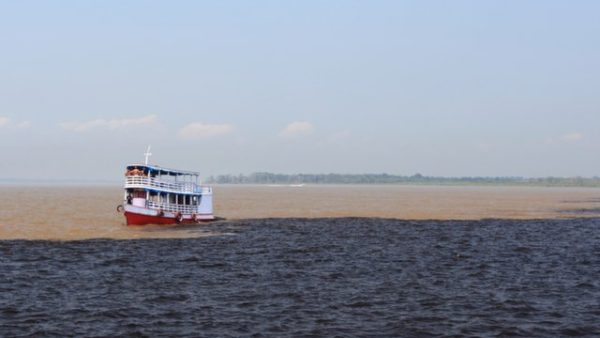
No visitor should leave Manaus without taking the “meeting of the waters” boat excursion. A few minutes out of the city, the inky waters of the Rio Negro almost converge with the muddy yellow waters of the Solimoes, a reference to the Amazon River. The two bodies of water touch but do not merge. It’s an amazing sight to behold.
The full-day tour includes a visit to Lago do January, where you can admire the giant water lily pads of the Amazon. Resembling huge pizza pies, they bloom during the month of May, when water levels in the region are at their highest.
